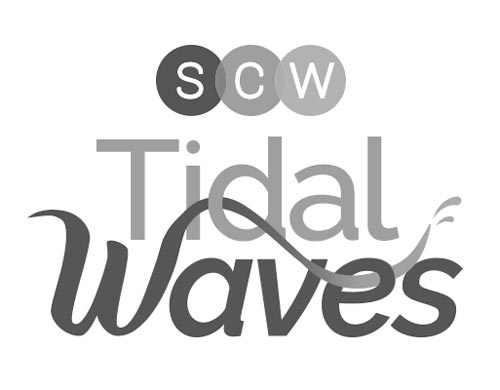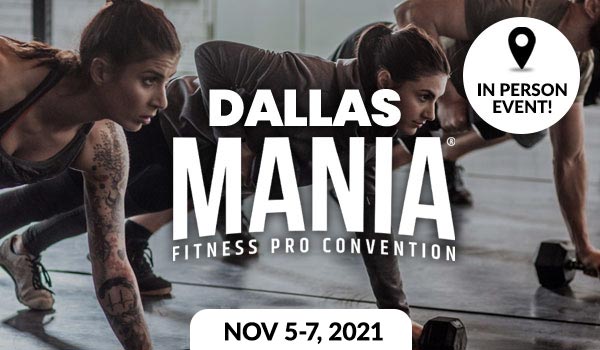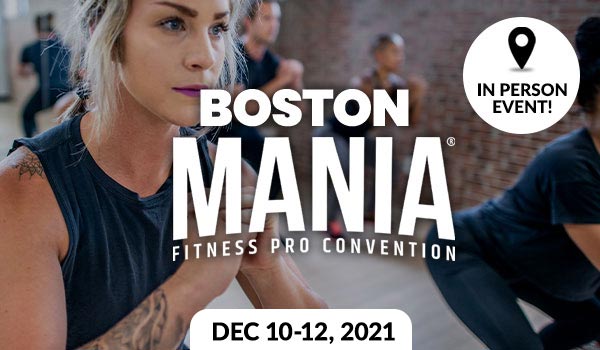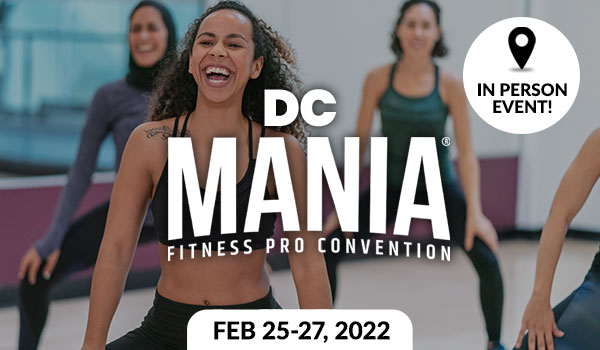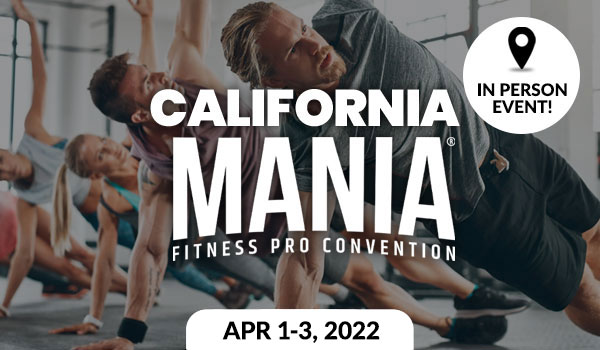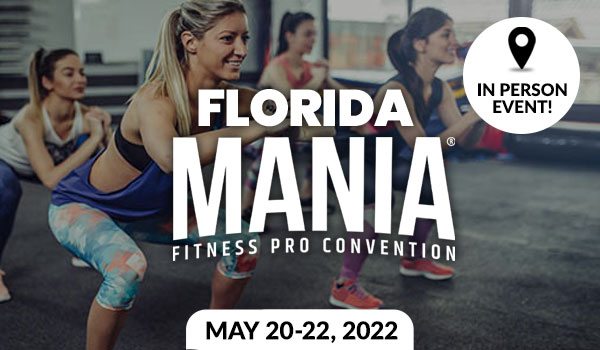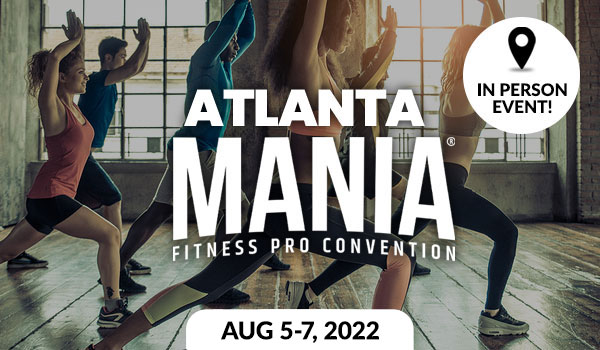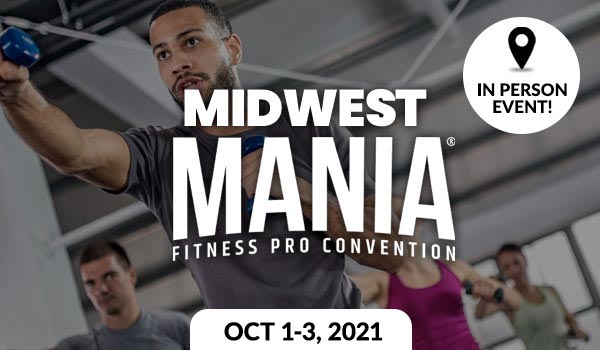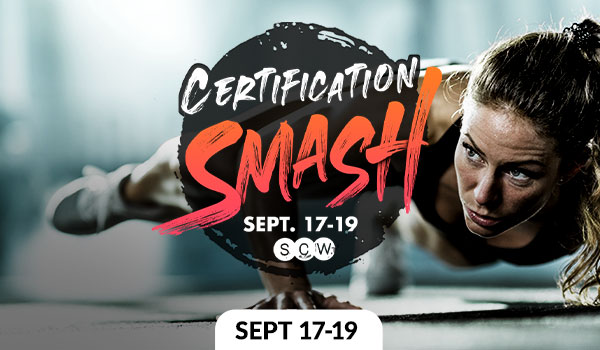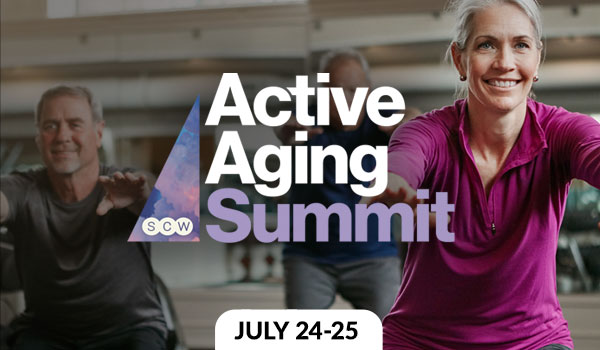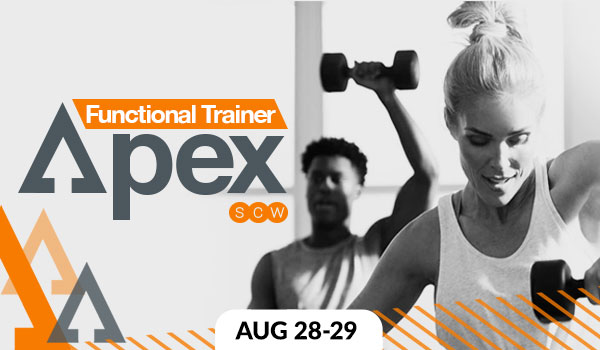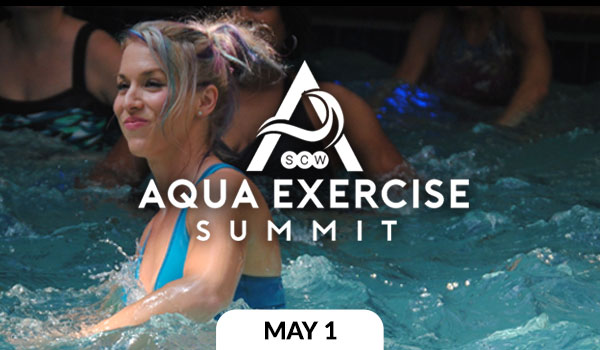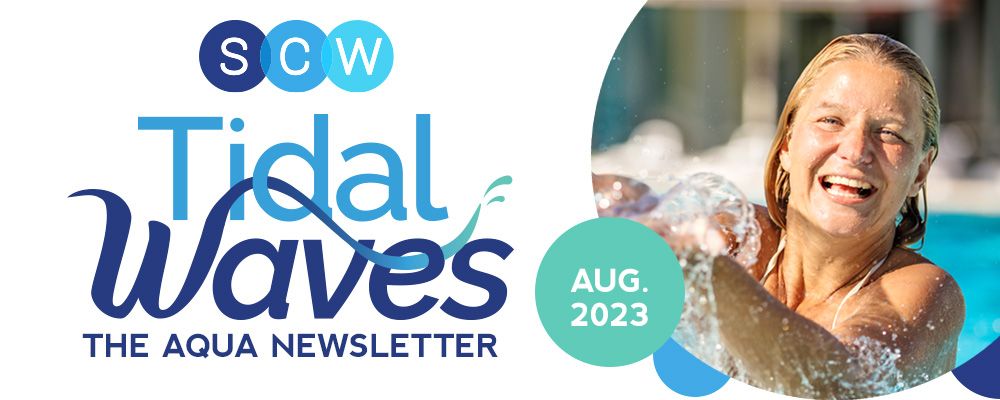
Take Care of Your Spine
By Christine Alexander
Eighty percent of Americans will suffer back pain at some time in their lives. Back pain often develops without a cause that shows up in a test or imaging study. According the Mayo Clinic, risk factors for back pain include age, lack of exercise, excess weight, diseases such as arthritis and cancer, and improper lifting. People prone to depression and anxiety and smokers have an increased risk of back pain. Regular low impact aerobics and abdominal and back muscle exercises that strengthen the core can help keep the back healthy and strong.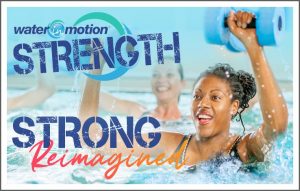
Exercises that improve posture is a good place to start. Bring the neck into alignment with chin tucks. Put a finger on your chin and, keeping your chin level, pull it away from your finger. Some people have trouble with this exercise and tend to pull the chin down. Another way to cue the exercise is to say “lift the sternum” which accomplishes the same thing. Next relax the shoulders and bring the shoulder blades down. Turning the palms forward can help accomplish this. When you stand, stand tall with your body weight evenly distributed between both feet and the knees pointing forward. When you sit, keep both feet on the floor with the knees bent at hip level or below,
Exercises to improve posture are exercises that strengthen the core. Although many people associate crunches with core exercises, the core includes all the muscles of the trunk. The pool is the perfect place to work the core because immersion in water activates the core muscles. It is a discreet but constant activation, and you do not feel it the same way as an abdominal crunch. The core muscles most in need of strengthening for good posture are the muscles of the upper back, the erector spinae and the glutes. Always stabilize the core before moving the arms and legs. The best exercise to strengthen the posterior muscles is to travel backwards in the pool. Some other exercises to try in the pool are: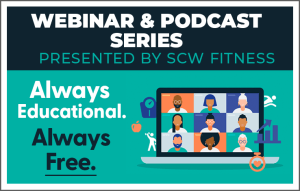
- Upright row. Cup the hands and pull the water toward you. You can also use webbed gloves, drag equipment or kickboards.
- Lat pull-down. Hold resistance tubing overhead and pull the ends down to the sides. Or do jumping jacks with foam dumbbells or drag equipment.
- Rear delt fly. Hold resistance tubing chest high and pull the ends apart.
- Shoulder external rotation. Rotator cuff sweep out with thumbs up.
- Straddle a noodle with the end of the noodle between the thighs; adjust the height of the knees to find the difference between extension, neutral and flexed.
- Abdominal pike and spine extension. Go only 45 degrees to the back to avoid hyperextending the back. Use a deep-water belt. Do not try this exercise with just foam dumbbells. (See the previous post on the shoulders.)
- Back rotation. Upper body twist or hula hoop.
- Squats with feet hip distance apart or a narrow stance.
- Hip extension. Skate kick or cross-country ski.


In addition to strengthening the core, there are some cautions to help you avoid an injury. When running in deep water, maintain the spine in neutral alignment. In this position the spine is off-loaded because of the buoyancy of the water. However, people often lean forward which reduces the frontal resistance and allows them to travel faster, but this position also causes spinal compression even though there is no lower body impact.


It is also important to maintain good posture in shallow water. Other things to avoid include prone flutter kicks at the wall. This compromises the grip, the neck, and the lumbar spine. Do not hang on the wall and do double leg lifts; this overloads the lumbar spine. Wall-hanging sit-ups do not exercise the abdominals and it is too difficult for many water exercise participants to get into that position. The risks outweigh any benefit. Crunches in a supine position put stress on the neck and use the hip flexors instead of the abdominals. Do not do rotation and forward flexion at the same time (opposite elbow to knee) as it puts stress on the lumbar spine. Participants with compressed discs or osteoporosis should avoid trunk flexion. It is better to work on core stabilization by bracing the core and emphasizing good posture.


Working on good posture and strengthening your core muscles are good ways to take care of your spine and reduce your risk of back pain in the future.
Resources:
- Ruth Sova, MS – Backs Mini Session 9-1-22
- Pauline Ivens, MS & Catherine Holder, PT Do No Harm 2011
 About the Author: Chris Alexander
About the Author: Chris Alexander
Christine is a nationally certified water fitness instructor through the Aquatic Exercise Association (AEA). She is the author of Water Fitness Progressions and of Water Fitness Lesson Plans and Choreography. Christine has been teaching water fitness for over 30 years and currently teaches 8 classes a week at Oak Point Recreation Center, for the Plano Parks and Recreation Department.
Courtesy Of: WATER FITNESS LESSONS
You can find the original article HERE
Follow us on IG: https://www.instagram.com/scwmania/
Like our FB page: https://www.facebook.com/scwmania
Follow us on X: https://twitter.com/scw_mania
Connect with us on LinkedIn: https://www.linkedin.com/company/scwfit/
Two Times the Fun at Midwest MANIA®
 So much education, what’s an Aqua Instructor to do? Take advantage of three days filled with 15 in-person water sessions with your favorite splashy presenters, along with over 100 exciting fitness workshops and go home to 30 wet & wild recorded lectures, along with over 200 recorded health, wellness, & business sessions to watch at your own pace for 60 days. Get registered today for only $249 with an SCW membership.
So much education, what’s an Aqua Instructor to do? Take advantage of three days filled with 15 in-person water sessions with your favorite splashy presenters, along with over 100 exciting fitness workshops and go home to 30 wet & wild recorded lectures, along with over 200 recorded health, wellness, & business sessions to watch at your own pace for 60 days. Get registered today for only $249 with an SCW membership.
Follow us on IG: https://www.instagram.com/scwmania/
Like our FB page: https://www.facebook.com/scwmania
Follow us on X: https://twitter.com/scw_mania
Connect with us on LinkedIn: https://www.linkedin.com/company/scwfit/
The Aerobics Conundrum
by Katy Coffey
Imagine if your doctor told you to increase your weekly cardio, and you decided to sign up for aerobic classes at your local gym. However, when you arrived for the 9 AM aerobics class on Monday, you found yourself in a fitness class centered around Latin-inspired dancing. While you broke a sweat and struggled to keep up, it wasn’t what you expected. On Tuesday, you showed up again for aerobics and found benches lined up with barbell equipment. The class focused on high repetition muscle conditioning, leaving your muscles sore but not providing the cardio workout you were seeking. Wednesday brought yet another surprise as you entered the studio to find yoga mats spread across the room. The 45-minute class focused on breathing and stretching, leaving you increasingly frustrated. Thursday’s class featured chairs and attendees mostly in their 80s, while Friday’s class introduced suspension ropes for body resistance training, but there were only 10 available spots and you hadn’t signed up. At this point, you were beyond frustrated because you signed up for a gym class that promised aerobic conditioning, yet the actual classes were completely different from what you expected.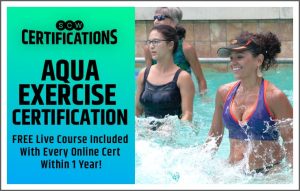
As you can imagine, if this were truly the case, no gym would be able to grow. When members enter our facilities, they expect to see a group fitness schedule with a variety of offerings. For example, Mondays might offer Zumba, Tuesdays could be dedicated to Barbell Conditioning, Wednesdays to yoga, Thursdays to chair fitness, and Fridays to TRX suspension. Each class has a specific purpose, definition, and title that helps students understand its focus during the 45-minute session. This is how the fitness industry works.

However, in the Aquatic Fitness industry, there seems to be a different approach. All aquatic fitness classes are commonly referred to as “Water Aerobics,” even though the classes may have different teachers or formats. The schedule simply states “Water Aerobics” at 9:00 AM every day. Let’s take a moment to recognize the harm that this simple word does to both our industry and the potential growth of our membership base.
To begin, let’s examine the definition of aerobic conditioning according to Webster’s Dictionary:
“Aerobics: a system of physical conditioning involving exercises (such as running, walking, swimming, or calisthenics) strenuously performed so as to cause marked temporary increase in respiration and heart rate.”
Aerobics is a physical conditioning system aimed at improving the body’s ability to utilize oxygen. Activities such as running, jogging, swimming, and dancing stimulate heart and lung activity. To derive benefits from aerobic training, the heart rate must be raised to the exerciser’s training level for at least 20 minutes, and a minimum of three sessions per week is required.
Now, let’s pause and reflect on the classes you teach in relation to this definition. Does the term “Aerobics” accurately describe the content of your class? Do you bring your students to the aerobic threshold for more than 20 minutes? Do they engage in steady-state training? In most cases, this is not the case. We often teach dance, HIIT, balance, arthritis exercises, intervals, or boot camps. As an industry, we need to start considering our classes as an aqua studio rather than just an aqua class. A well-balanced schedule should offer a variety of classes with different intensity levels and cross-training modalities, all designed with a specific intent in mind.
How do you choose a name for your class? When adding an aquatic fitness class to the schedule, remember that words hold power. The name you choose for your class matters. Before settling on a name, consider the ultimate outcome of your format.
What will students receive, and what should they expect?
Is the class focused on strength?
Does it involve low-impact exercises with intervals of lower intensity?
Does your class move to the beat of the music?
Try to summarize your class in 2-3 sentences that capture its essence, and then find 1-4 words that encapsulate the key elements.
For example:
Boot Camp H20: Students will be pushed past training plateaus with shallow water training designed to target agility, balance, coordination, speed, and cardio capacity.
Stretch & Balance: This low-intensity class focuses on mobility, functional movement, and active stretching, supported by the water’s resistance.

Consider adding an intensity scale to your schedule. Many prominent fitness centers have redesigned their schedules, whether on their app or website, to include an intensity scale. This scale helps students quickly determine the level of intensity for each class. For example, a variety of yoga classes can be differentiated through the title and intensity scale. This allows students to identify if a class is foundational and gentle or includes high-intensity interval training in a heated room. Both classes fall under the category of yoga but have significantly different intensity levels. Collaborate with your manager and explore the possibility of introducing intensity scales to guide members toward the appropriate class.
Let’s also strive to be inclusive in our formats. Search “Aqua Aerobics” in your internet browser and click on the images. What do you see?

Most likely, images of seniors holding hand buoys above their heads, with dry hair and calm waters. While this may represent a standard low-intensity aquatic fitness class, the imagery and stereotype associated with the term “aerobics” can be exclusionary.
Now, search for “Aquatic Fitness” and examine the images. You’ll likely find a more diverse catalog featuring specialty equipment, a variety of age groups, and different exercise styles in the water.

As professionals, we know that water is beneficial for everybody and EVERY-BODY, not just specific populations. Using inclusive language in class descriptions can invite new clients to try the water, even those who might be put off by the mental image associated with “Aqua Aerobics.”
For example:
Hydro Fit: A traditional aquatic fitness class that improves flexibility, range of motion, strength, muscle tone, and cardiovascular endurance using the resistance of the water.
Tabata H20: Tabata training breaks down a workout into intervals of 20 seconds of exercise and 10 seconds of total rest. This high-intensity class ensures a full-body workout in 45 minutes or less.

As an industry, we must work together to change the perception of aquatic fitness. I challenge you and your facility to abandon the term “aerobics” and add more focus to your schedule. Once we establish clear definitions and terminology for the classes we offer, we will see positive momentum in transforming this industry.
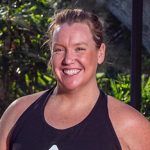 About the Author: Katy Coffey
About the Author: Katy Coffey
Katy Coffey is the Senior Aquatics Trainer for the YMCA of the North Shore. For more examples of their “Liquid Gym,” visit their Aquatic Fitness Schedule Page at https://www.northshoreymca.org/aqua-fitness-liquid-gyms.
Follow us on IG: https://www.instagram.com/scwmania/
Like our FB page: https://www.facebook.com/scwmania
Follow us on X: https://twitter.com/scw_mania
Connect with us on LinkedIn: https://www.linkedin.com/company/scwfit/
Feed Your Career:
Nutrition Coaching Summit
 Help your participants, help themselves! One tasty day of Elite Nutrition Education full of flavor and lots of ingredients. Bite into 36 sessions with 26 delicious Top Industry Presenters, as well as 6 unique Nutrition-based certifications. Earn up to 12 CEC including 40 days of recordings for only $199 (was $299.) Ready to Devour?
Help your participants, help themselves! One tasty day of Elite Nutrition Education full of flavor and lots of ingredients. Bite into 36 sessions with 26 delicious Top Industry Presenters, as well as 6 unique Nutrition-based certifications. Earn up to 12 CEC including 40 days of recordings for only $199 (was $299.) Ready to Devour?
Follow us on IG: https://www.instagram.com/scwmania/
Like our FB page: https://www.facebook.com/scwmania
Follow us on X: https://twitter.com/scw_mania
Connect with us on LinkedIn: https://www.linkedin.com/company/scwfit/
Keeping Our Clients Strong
(and Injury-Free) as They Age
by Becca Tebon
Exercising safely and effectively is important at any age, but it becomes even more crucial as your clients enter their 30s, 40s, 50s and beyond
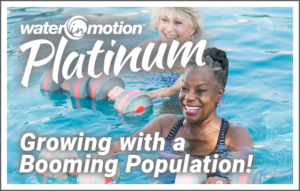
- Body composition: The overall composition of their body is more important than just the number on the scale. Losing weight doesn’t necessarily mean you’re losing fat. It could also mean losing muscle mass, which is not desirable. By focusing on fat loss and muscle retention, your aim is to improve their body composition by reducing body fat while preserving or even increasing lean muscle mass.
- Metabolism: Muscle is metabolically active tissue, meaning it burns calories even at rest. By retaining or building muscle, you can increase their basal metabolic rate (BMR), which is the number of calories their body needs to maintain basic functions. A higher BMR can make it easier to maintain a healthy weight in the long-term.
- Health benefits: Losing excess body fat has numerous health benefits, including reduced risk of chronic diseases such as heart disease, diabetes and certain cancers. Additionally, maintaining muscle mass is important for overall strength, mobility and functional independence as they age.
- Aesthetics: Building and maintaining muscle can help them achieve a more toned and defined physique. It can enhance body shape and giving a leaner appearance, even if the number on the scale doesn’t change significantly.
How to Exercise in Your 30s
- Add mobility work: If they were active throughout their 20s, they might have scoffed at the idea of a rest day or taking the time to stretch properly after a workout class. As they enter their 30s, however, they may start to notice more intense soreness and a longer recovery time post-workout. This is normal, but I also suggest working on their mobility.
- Build in strength training
- Keep up the cardio
How to Exercise in Your 40s
- Squeeze in ‘idle’ workouts: For most people, their 40s are characterized by being extremely busy, trying to juggle child care, work demands, caring for aging parents and overall feeling pretty limited with personal time. These years may be full of memories and progress, but they could also leave little time for a trip to the gym.
- Make the warm-up dynamic: 40s are typically where joint health, functionality and cardiovascular conditioning need to take a head seat at the table.
- Mix in low-impact workouts
How to Exercise in Your 50s
- Start slowly and easy if they’ve been inactive: A typical issue is bone mass and density loss over time, which leaves bodies more susceptible to potential injury. So if your client hasn’t been staying active and wants to start working out more regularly, it’s essential to start slowly. For example, I recommend beginning with water aerobics and working your way up to hillwalking as their muscles start to strengthen. Women older than 50 may need more time to recover from injuries. Be sure to schedule a rest day or two in-between workouts.

- Give feedback, listen to their bodies and continue to strength train
How to Exercise in Your 60s and Beyond
- Move it or lose it: The goal, simply, is to keep moving, no matter what. The more sedentary they are, the more their muscles, joints and other body parts start to freeze up, flare up and become stiff and brittle.
- Consistent baby steps prevail over perfection: Incorporate pressing, pulling, planks, rotation, squats and split stance movements (like lunges) in your sessions. As well, I also like giving clients sequential movements to keep them “thinking” during their workout. Using the mind x body connection is surrounded by massive science to slow down brain deterioration, such as dementia.
- Work on balance, symmetry, flexibility and coordination: Physical activity should be a consistent, ongoing part of exercise routines, no matter if your clients are 25, 35, 45 or 75. However, your exercise routine and their fitness priorities should adapt allowing healthy vitality and longevity, as your client’s body and physical needs change.
 About the Author: Becca Tebon
About the Author: Becca Tebon
Becca Tebon developed a three-band system used today called powHERbands™️, has launched the “Woman Band Together” movement, has been featured in magazines, podcasts — and many fitness trainers now use her system. She can be reached at Becca@BeccaTebon.com, via Instagram @BeccaTebonfit or visit www.BeccaTebon.com.
Courtesy Of: Personal Fitness Professional
You can find the original article HERE
Follow us on IG: https://www.instagram.com/scwmania/
Like our FB page: https://www.facebook.com/scwmania
Follow us on X: https://twitter.com/scw_mania
Connect with us on LinkedIn: https://www.linkedin.com/company/scwfit/
Looking To Hire? FREE Job Board
In Need of Teachers, Trainers, Directors, or Managers? SCW’s new FREE JOB BOARD is supporting the industry’s need for qualified fitness pros.
Best of all there is NO COST to you. We will post your openings in all three of our monthly e-newsletters: Spotlite, Health & Fitness Business News, and Tidal Waves which are emailed out to tens of thousands of fitness professionals teaching and training in all formats along with managers and directors at all fitness facilities: big box, gyms, boutique, studios, not for profits and independent centers.
Follow us on IG: https://www.instagram.com/scwmania/
Like our FB page: https://www.facebook.com/scwmania
Follow us on X: https://twitter.com/scw_mania
Connect with us on LinkedIn: https://www.linkedin.com/company/scwfit/
We’re always looking for great content highlighting the newest things in the world of aquatic fitness. Please submit your article directly to editor@scwfit.com for immediate consideration!
Give us your feedback on what interests you, and maybe YOU will make it in the SCW Tidal Waves!
Tidal Waves, January 2025
Tidal Waves, November 2024
Tidal Waves, October 2024
Tidal Waves, June 2024
Tidal Waves, May 2024
Tidal Waves, April 2024
Tidal Waves, March 2024
Tidal Waves, February 2024
Tidal Waves, January 2024
Tidal Waves, December 2023
Tidal Waves, November 2023
Tidal Waves, October 2023
Tidal Waves, September 2023
Tidal Waves, August 2023
Tidal Waves, July 2023
Tidal Waves, June 2023
Tidal Waves, May 2023
Tidal Waves, April 2023
Tidal Waves, March 2023
Tidal Waves, January 2023
Tidal Waves, November 2022
Tidal Waves, September 2022
Tidal Waves, July 2022
Tidal Waves, June 2022
Tidal Waves, May 2022
Tidal Waves, April 2022
Tidal Waves, March 2022
Tidal Waves, February 2022
Tidal Waves, January 2022
Tidal Waves, November 2021
Tidal Waves, October 2021
Tidal Waves, August 2021
Tidal Waves, July 2021
Tidal Waves, June 2021
Tidal Waves, May 2021
Tidal Waves, April 2021
Tidal Waves, March 2021
Tidal Waves, January 2021

